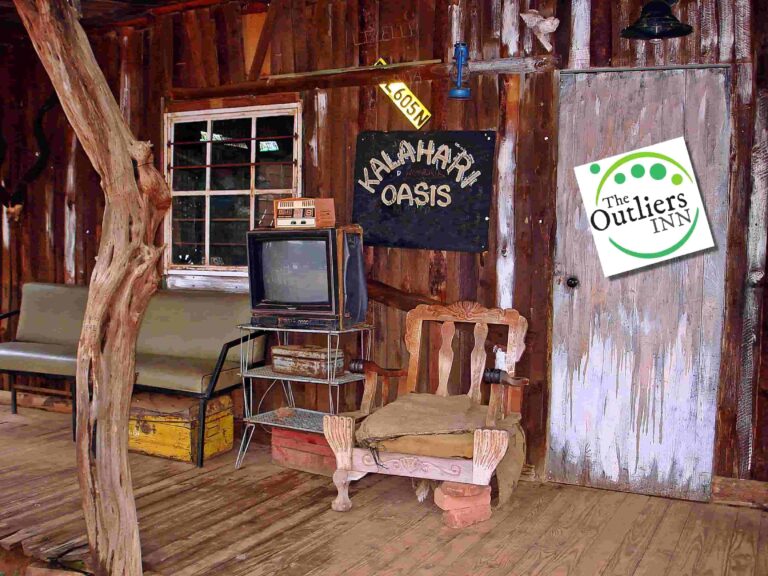SURVEY: In Search of Great Change Agents
When an organization goes in search of great change agents, what exactly sets apart the individuals most likely to succeed? Is it background? Training? Having a good boss? Or is it something deeper—perhaps even something that could be measured? XONITEK is engaging with a research partner to develop a tool for doing exactly that. Find out about this research study and how your organization can participate and benefit from it.
cat*a*lyst (kät’l- Ïst) n A substance that modifies, especially increases, the rate of a chemical reaction without being consumed in the process – The American Heritage Dictionary of the English Language, Dell Publishing Company ©1976
For much of my corporate life, I have been involved with (TQM) total quality management, manufacturing excellence, continuous improvement, process reengineering, Progress, quality action teams, Kaizen, Lean, performance improvement or simply customer focused, ad hoc project work teams.
I was often chosen to facilitate these groups using the tried and true process improvement tools and techniques like Brainstorming, Flowcharts, Pareto charts, histograms, Run Charts, Cause and Effect Fishbone Diagrams, Affinity Diagrams, Force Fields, Nominal Group Technique, Decision Trees, Check Sheets, Contingency Diagrams and on and on.
In one of my assignments with a chemical manufacturer, I was referred to as a catalyst. Roughly 65% of my work in that role centered on facilitating cross-functional teams as we changed standard operating procedures surrounding million-dollar cracking processes.
In fact, I was so good at facilitating these “teams” that one group of maintenance technicians began to call me “round room” because, as they told it, no one “could ever paint me into a corner.” I guess they thought that because I was so un-opinionated, I could always see the issues from both sides of the coin, so to speak. Well, that was not entirely true. I always tried to see things from the customer’s view, especially since they were paying the bills for all of us.
This concept of being unbiased in my approach to process improvement seemed to be considered one of my strengths. And Management often commented on my abilities to “moderate,” “facilitate,” and “simplify” work processes so that people could see things from a different perspective.
Were these the traits that prompted my success with implementing operational excellence?
Now, granted, I came out of Human Resources and Organizational Development. I even, with my employer’s encouragement, sat for and received my certification as a Senior Professional in Human Resources (SPHR). However, I was never motivated to return to college to get an advanced degree of any sort. I never pursued advanced education like a Master’s in HRD or a PhD in Organizational Psychology. I just was not motivated by having letters after my name or job title and did not see that lacking these designations ever prevented or deterred my efforts or success.
Is an advanced degree like an MBA or a Master’s in Industrial and Organizational Psychology necessary to be a successful change agent? Apparently not.
So, with a record of many significant, measurable improvements—such as reducing required headcount by 47% in a manufacturing process, to name just one—what specifically made me such an effective change agent in all of my various continuous improvement projects? Was it my “round roomness”?
What makes up my “round roomness,” anyway? It’s just a nickname, and doesn’t represent true competencies or capabilities per se.
Is it a combination of traits? If it is a combination of other traits, what traits and in what combination?
Is it primarily my expertise and use of the “tools” like Fishbone, Brainstorming, Nominal Group Technique, etc.? If expertise is the key, why aren’t more people successful with process improvement? There were a lot of people who went through the training with me when I learned to use the process improvement tools. I never heard about or read in the company newsletter about those guys implementing process improvements, like the articles written about my projects.
Was my boss the differentiator? I often got feedback from her about her manager being pleased at the projects we were completing. What did she do that was so different from her peers? I did not hear much about other peoples’ bosses, except how much more work they got delegated compared to the amount of work I seemed to get from my boss.
Maybe that was it? Maybe it was the fact that my boss always talked about how process improvement WAS our job. It seems like we were always talking about “there had to be a better way to do ….” But that was what everybody talked about, either when they were complaining or critiquing somebody else’s work.
No. What I realize today is that something about the way I looked at the world, looked at my job, looked at other peoples’ jobs, looked at what we were doing or not doing, made me different from these other people.
But how do you measure that? How can you spot somebody who has the “can do” and the “will do” for Operational Excellence? After all, if Amazon.com can predict which book I’m going to buy next, then why can’t something predict which person is going to fill the bill when I’m going in search of great change agents?!?
The study of measuring how people think is called psychometrics. Across decades of research and analysis, a variety of psychometric tools have emerged for business use. You’ve probably heard of them, and perhaps even been assessed using one. The Myers-Briggs Type Indicator (MBTI®) personality assessment and the DiSC personality test are among the most popular.
Aha! Perhaps being “round roomy” is a reflection of my personality traits? Could a leader going in search of great change agents use one of these personality tests to determine which resources are naturally “round roomier” than others?
Now, I’ve avoided studying statistics ever since I ditched the Intro course in college, but to succeed in today’s world of Big Data and predictive analytics, I’ve had to bone up. Here’s what I’ve learned: while we seem to be on the right track about personality traits, there’s a hitch with using these particular personality tools (along with most others) to predict performance.
To use statistical language, MBTI®, DiSC, and most on the market are ipsative. That is, they can reliably show whether two individuals have a particular personality trait, such as initiative, for example. For this reason, they add a lot of value for organizations in a variety of ways. But, because of the way they are designed, they cannot measure and compare how much initiative one person has compared to another.
To perform a truly valid statistical analysis of which potential change agents have the most “round roomness,” one would need a normative assessment. A normative assessment is designed and calibrated specifically to measure traits in a way that supports comparison. And when you can compare, you can predict.
Because of their long-standing commitment to helping their clients identify, train, and deploy great change agents, XONITEK has formed a strategic alliance with Smart Work | Network, Inc., which is the Master US Distributor for the world’s premier normative, predictive psychometric assessments. Smart Work | Network’s assessments reflect 35 years of statistical research and analysis involving data from more than 20 million individuals working across numerous industries and companies in 25 countries around the world. Smart Work’s assessments have been validated to predict performance and retention in more than 2,500 studies.
Working together, XONITEK and Smart Work | Network are kicking off a research project that will ultimately yield an Ideal Change Agent Profile that organizations can use to determine which of their leaders are most naturally suited to be high performance change agents—those with the most “round roomness,” if you will. See the article “How Many Change Agents Does It Take to Change a Lightbulb?” in last month’s enewsletter for more information.
At the conclusion of this joint research project, just as actuarial calculations can measure the probability of a person’s premature demise, XONITEK and its clients will be able to identify those individuals in an organization predisposed to be effective “round rooms.”
Participate in our Survey!
As a first step in this study, we need to find organizations and leaders interested in helping us identify the truly predictive traits of successful change agents. As part of our research partnership with XONITEK®, we have developed a survey to get us started. If you are reading this, and you are interested in participating in our study, follow the link below and tell us what you think makes a change agent a great change agent. As a thank-you for your participation, you’ll receive a copy of the survey research results.
Follow this link to complete our survey: What Makes a Change Agent Great?
Or contact Trinity DeMars at demarstk@xonitek.com if you have more questions.
By Douglas Garner
Douglas Garner is a Senior Partner with Smart Work | Network, Inc., a talent consulting practice based in Greenville, South Carolina. A “recovering” Fortune 50 Human Resources manager (SPHR), Doug realized that the ‘conventional HR wisdom’ of the past did not guarantee the right fit in executive selection nor any guarantees of superior performance after the hire.
Contact him at doug@smartworknetwork.com






